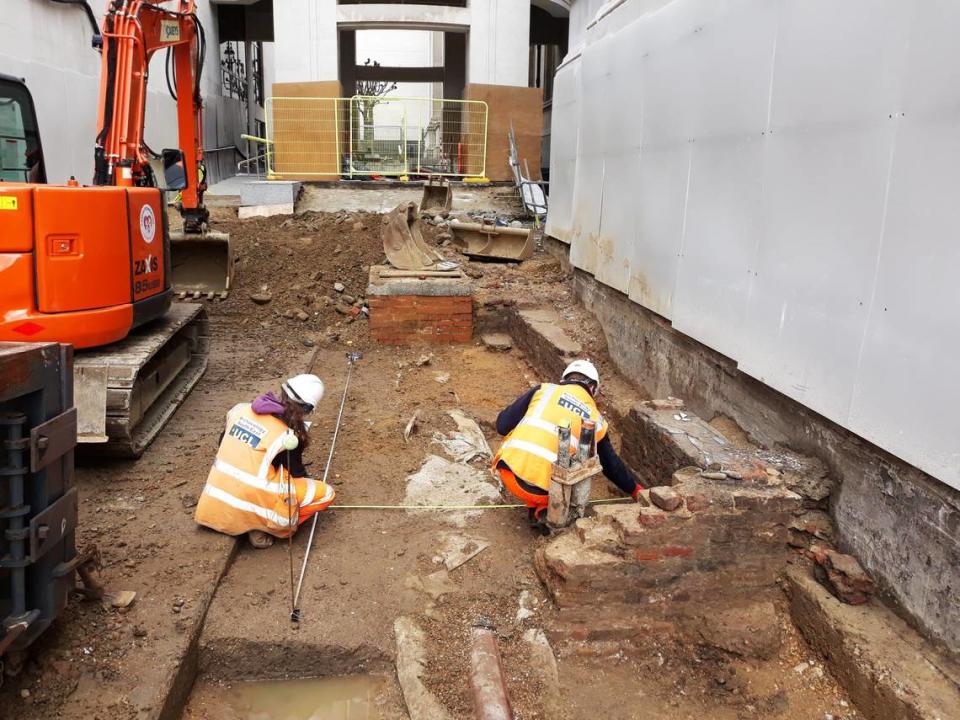Famed London museum sat atop 1,200-year-old settlement — hidden until now. See it
Millions of people visit London’s National Gallery every year to marvel at the Van Goghs and da Vincis that line the walls of the vaunted museum.
But unbeknownst to them, another treasure — of considerably older origin — lay buried not far beneath their feet: an ancient settlement once occupied by early Britons.
The previously unknown site was discovered by archaeologists during an excavation below the gallery in preparation for the construction of a tunnel, according to a February news release.
“It’s an honor for the National Gallery to be part of a discovery like this,” Sarah Younger, head of the redevelopment project, said in the release.

The settlement, officials said, belonged to Saxons, a tribe of Germanic people who settled the abandoned Roman city of Londinium around the seventh century A.D.
They put down roots slightly to the west of the city, establishing a trading center that came to be known as Lundenwic.
By the eighth century A.D., the settlement appears to have expanded considerably with timber buildings erected and the riverfront facilitating seaborne trade, according to research from Cambridge University.
About a century later, Lundenwic was abandoned as residents moved to the east following a series of disastrous Viking raids.
Previous archaeological digs have uncovered Saxon artifacts east of the museum, but the most recent excavation is the first to prove their urban center stretched so far to the west.

Among the findings were a hearth, stakeholes, postholes, ditches, pits and leveling deposits, officials said.
Preliminary analyses indicated they were used for the alteration of fence lines and property boundaries in Lundenwic — suggesting parcels of land were changing hands.
Radiocarbon dating allowed archaeologists to place the site’s occupation at sometime between 659 and 774 A.D., making it at least 1,250 years old.
In addition to the Saxon settlement, archaeologists also uncovered a series of post-medieval walls — likely built in the 17th or 18th centuries — higher up in the sediment.
The walls, made from various materials, went through numerous rebuilding phases up until the 19th century.
The discovery “brings home to us how everything we are building and re-constructing as part of this project will be part of the fabric and history of London for centuries to come,” Younger said in the release.
Trove of ancient treasures from across the world found in Saudi Arabia city. See them
247-year-old lost gold coin — from defunct republic — discovered by metal detectorist
Pregnant creature — with gold eyes — found on Australia island. It’s a new species

